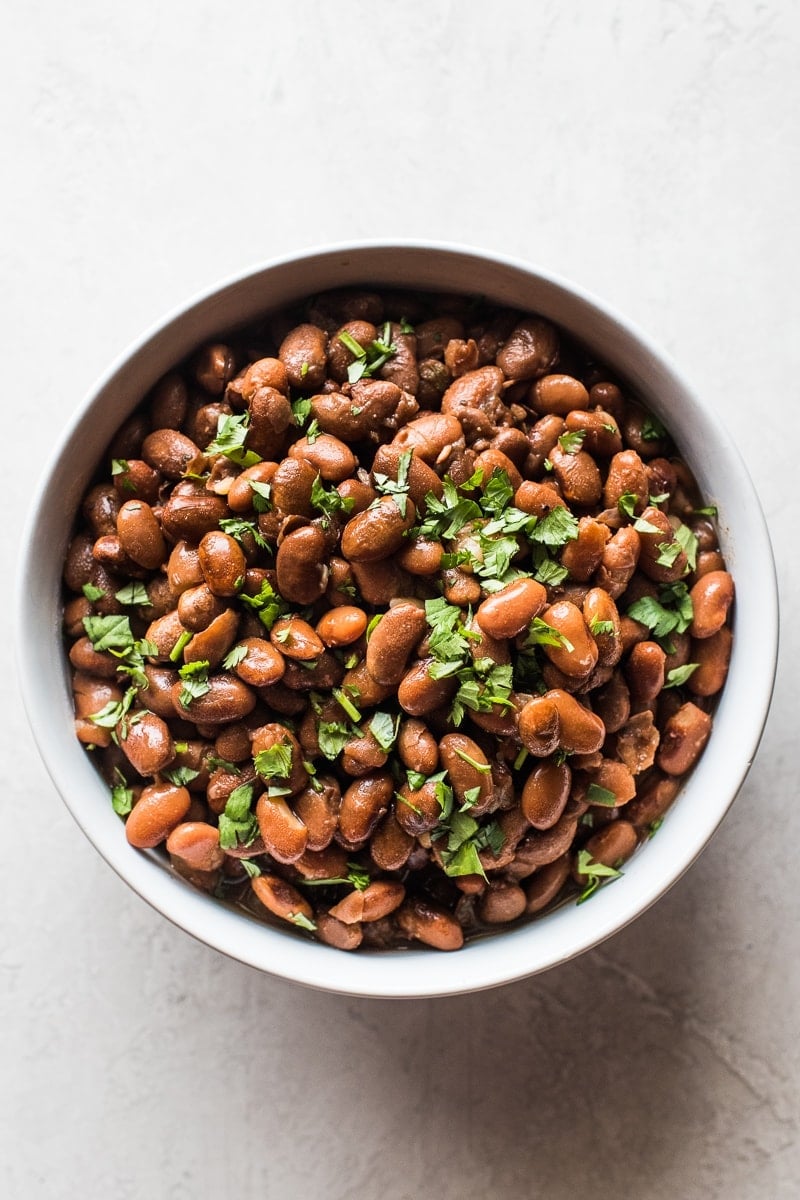

If you want to live to 100, and live well all along the way, eat beans, encourage nutrition researchers worldwide.
#Black or pinto beans healthier full#
The longest-living communities in the world, from Campodimele, Italy, to Okinawa, Japan, eat diets full of beans and bean-based foods like tofu. 3Ī bean-rich diet may even help you live longer. Red-meat eaters have gut microbiomes that convert the carnitine in meat into compounds called TMAO, which accelerate plaque build-up, increasing heart disease risk. The best foods for the microbiome in the gut, studies show, are fiber-rich foods. They play a big role, research is learning, in keeping us healthy. Microbiomes are communities of microbes throughout our bodies.

Not only are bean burgers better at filling the belly, they do it on fewer calories. There’s one other nice bonus that this beans-vs-meat study shows.

“While more studies are needed for a definitive proof, it appears as if vegetable-based meals – particularly those based on beans and peas – can serve as a long term basis for weight loss and as a sustainable eating habit,” concluded Dr. Her research found that “one can eat a fiber-rich meal, with less protein, and achieve the same sensation of fullness. Raben, don’t think you have to rely on a large amount of protein from meat to fill you up and keep hunger at bay. Noted the study’s lead author Anne Raben in a University of Copenhagen press release: “Interestingly, a vegetable-based meal with lower protein content was as satiating and palatable as an animal-based meal with higher protein content.” Fiber For Losing Weightįor losing weight, sums up Dr. In fact, when it comes to hunger-curbing power, fiber may be more impressive than protein. Fiber, which beans are rich in, is a superb stomach-filler. Fiberīut it’s critical to remember that it’s not just the protein in the beans that created feelings of fullness. Obviously, that’s a very important asset if you’re trying to shed weight. Put simply, the bean meals had more “staying power.” They provided more stomach-filling satisfaction than the meat meals, which curbed food intake at the next meal. When the men ate the bean meals with 19% protein, they consumed 12% fewer calories in their next meal than when they had eaten the meat meals (also 19% protein). The other half, the bean meals had less protein (9% of calories). Half of the time, the bean meals contained the same amount of protein as the meat meals (19% of calories). In a recent study from the University of Copenhagen, scientists gave 43 young men several meals in which the main source of protein alternated between patties made from veal/pork and patties made from fava beans.


 0 kommentar(er)
0 kommentar(er)
